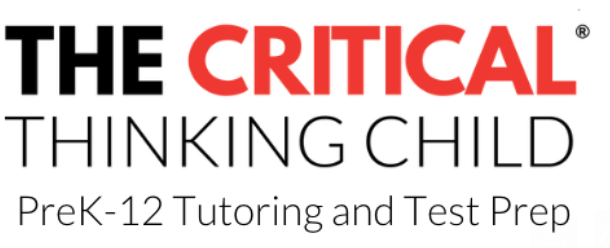The Renaissance STAR 360 assessment is a big deal for many educators and parents because it can pinpoint specific students who require academic assistance in reading or math. It can also reveal more general problems impacting a particular class, school, or district. Teachers can establish learning objectives, and create a plan to achieve and measure those objectives. Parents can compare their child’s growth to the growth of their academic peers. . Here we will provide you with an overview to help you better understand the STAR 360 assessments.
What are STAR 360 Assessments?
The Renaissance STAR assessments are a set of computer-adaptive tests designed to measure the academic progress of students in the areas of literacy, reading, and math. The name “STAR 360” comes from the fact that the assessment suite provides a complete 360-degree view of a student’s academic progress across these three key subject areas. The three subject areas are:
- STAR Early Literacy: This test is designed to assess the skills of students in pre-kindergarten to grade 3 in areas such as phonemic awareness, phonics, vocabulary, and comprehension. The test is adaptive, which means the questions adjust to the student’s skill level as they progress through the assessment.
- STAR Reading: This test is designed to measure the reading skills of students in grades K-12. The assessment covers a range of skills, including vocabulary, comprehension, and reading fluency. The test is also adaptive and adjusts the difficulty of the questions to match the student’s reading ability.
- STAR Math: This test is designed to measure the math skills of students in grades K-12. The assessment covers a range of skills, including computation, problem-solving, and math fluency. The test is adaptive and adjusts the difficulty of the questions to match the student’s math ability.
How are the STAR Assessments conducted?
Here’s a breakdown of how the tests are conducted:
- Administration: The STAR assessments are typically administered online, using a computer or tablet. The tests are timed, but the time limits vary depending on the specific assessment and the grade level of the student. Generally, students are given a set amount of time to complete the test, and the test will automatically end when the time is up.

- Adaptivity: As the student progresses through the assessment, the difficulty of the questions adjusts in response to the student’s answers. If the student answers a question correctly, the next question will be slightly more difficult. If the student answers a question incorrectly, the next question will be slightly easier.
- Question items: The number of test items or questions on the STAR 360 assessment test can vary depending on the specific assessment and grade level being tested. The STAR 360 assessment is a suite of computer-adaptive assessments that are designed to measure student progress in reading, math, and early literacy. For example, the STAR Reading test for grades 1-12 typically includes 34-48 questions, while the STAR Math test for grades 1-12 includes 30-40 questions. However, the number of questions on the test may be different for younger or older students.
- Missed questions: If a student misses a question, the test will provide an easier question to help assess the student’s understanding at a lower difficulty level. If a student answers several questions correctly in a row, the test may provide a harder question to assess the student’s ability at a higher difficulty level. The purpose of this adaptivity is to more accurately assess the student’s overall skill level and provide a more precise measure of their academic performance.

- Results: Once the student has completed the test, the results are typically available to teachers and administrators immediately. These results can help teachers identify areas of strength and weakness for individual students or for the class as a whole, and adjust their instruction accordingly.
What specific skills are students being tested on?
The STAR 360 assessment suite includes assessments for early literacy, reading, and math, each of which measures a range of skill sets. Here are the skill sets that are assessed in each subject area:
- STAR Early Literacy:
- Phonological Awareness
- Alphabet Knowledge and Early Writing
- Concepts About Print
- Listening Comprehension
- STAR Reading:
- Word Knowledge and Skills
- Comprehension Strategies and Constructing Meaning
- Analyzing Literary Text
- Analyzing Informational Text
- STAR Math:
- Number and Operations
- Algebra and Functions
- Geometry and Measurement
- Data Analysis, Statistics, and Probability
It’s worth noting that each of these skill sets is broken down into more specific sub-skills, which are assessed through a series of questions that adapt to the student’s skill level. This allows for a more accurate and precise measurement of the student’s performance, and helps teachers identify areas where additional instruction may be needed.
Overall, the STAR 360 assessment suite is designed to provide a comprehensive view of a student’s academic progress, and to identify areas where additional support or intervention may be needed. By assessing a range of skill sets across multiple subject areas, the assessment suite provides a more complete picture of a student’s strengths and weaknesses, and helps teachers tailor their instruction to meet the individual needs of each student.
How to Review the STAR 360 Score Results
Reviewing a STAR assessment report can be overwhelming at first, but once you understand the key components, it becomes much easier to interpret. Here are some tips for reading your child’s STAR assessment report:
- Look for the domain: The domain section of the report indicates the subject area that was tested. This might include reading, math, or early literacy, depending on the specific assessment.
- Review the scale score: The scale score is a numeric value that represents the student’s overall performance on the assessment. This score is based on the number of questions answered correctly, and takes into account the difficulty level of the questions that were answered. Higher scores generally indicate better performance.

- Check the percentile rank: The percentile rank indicates how the student’s performance compares to that of other students in the same grade level who took the assessment. For example, if a student’s percentile rank is 75, this means that they performed better than 75% of other students in their grade level who took the same assessment.
- Look at the zone of proximal development: The zone of proximal development, or ZPD, is a range of scores that indicate the student’s optimal learning level. This range is based on the student’s performance on the assessment, and is intended to help teachers identify the student’s strengths and weaknesses, and tailor their instruction to the student’s needs.
- Growth: The growth section of the report provides information on how the student’s performance has changed over time. This might include information on the student’s previous assessment scores, as well as their current score, to help teachers track the student’s progress.
- Review the recommendations: Finally, the report may include recommendations for next steps, based on the student’s performance. This might include suggestions for additional instruction or resources, or guidance on how to build on the student’s strengths and address their areas of weakness.
How do STAR 360 scores affect my student’s experience at school?
The impact of a student’s STAR 360 assessment scores on their experience at school can vary depending on a number of factors, including the specific assessment results, the student’s overall academic performance, and the policies and practices of the school or district.
In general, low STAR 360 assessment scores can be an indicator that a student may be struggling in a particular subject area or skill set. In some cases, schools may use these scores to identify students who may be in need of additional support or intervention, such as tutoring or other academic interventions. However, it’s important to note that policies and practices regarding interventions may vary widely between schools and districts, and there may be other factors that are taken into account in addition to the STAR 360 assessment results.
If your child has received a low percentile score on their STAR 360 assessment, it’s important to work with their teacher to understand the results and identify any areas where additional support or intervention may be needed. Depending on the specific assessment results and the policies and practices of the school or district, this may involve working with a tutor, participating in a small group intervention, or receiving other targeted support to help address areas of weakness.
A good STAR 360 assessment scores can have a positive impact on a student’s experience at school in a number of ways. For example, high test scores can boost students’ confidence and motivation, and encourage them to continue to work harder and take advanced math classes. In general, if a student has received a high percentile score on their STAR 360 assessment, it may be an indicator that they are performing very well in a particular subject area or skill set. In some cases, high STAR 360 assessment scores may also open up opportunities for advanced coursework, gifted programs, or other enrichment activities, depending on the policies and practices of the school or district.
While the assessment can provide valuable insights into a student’s academic progress, it is also important to keep in mind that the STAR 360 assessment is just one tool that teachers and schools can use to assess student performance. While the assessment can provide valuable insights into a student’s academic progress, it should be considered in the context of other assessments, teacher observations, and classroom performance to make informed decisions about a student’s academic needs. Ultimately, the goal of the assessment is to provide teachers and administrators with the information they need to support student learning and growth, and to help students achieve their full potential.
Where can I get more information?
Renaissance, the company that produces the STAR 360 assessment, provides a variety of resources for educators and parents on their website. You can find more information about the assessment, including sample reports, technical documentation, and training resources, at the following link: https://www.renaissance.com/products/star-360/




I found your article on STAR 360 assessment tests to be incredibly informative. It’s great to know the key details about these tests and how they can benefit students. The way you explained the purpose, structure, and benefits of STAR 360 was clear and concise. It’s reassuring to see how these assessments can help identify students’ strengths and areas for improvement. Thank you for sharing this valuable information!
Thank you. We have heard similar feedback from parents and tutors alike. We are constantly striving to provide the best learning tools, and your feedback motivates us to continue delivering high-quality products.
Do school districts recognize/accept scores of homeschooled Elementary students for entrance into Middle/High School.
(Same question for college entrance.)
Hi Patrick yes they do. I suggest you contact the school district first and ask which scores/test they accept for homeschooled elementary students.